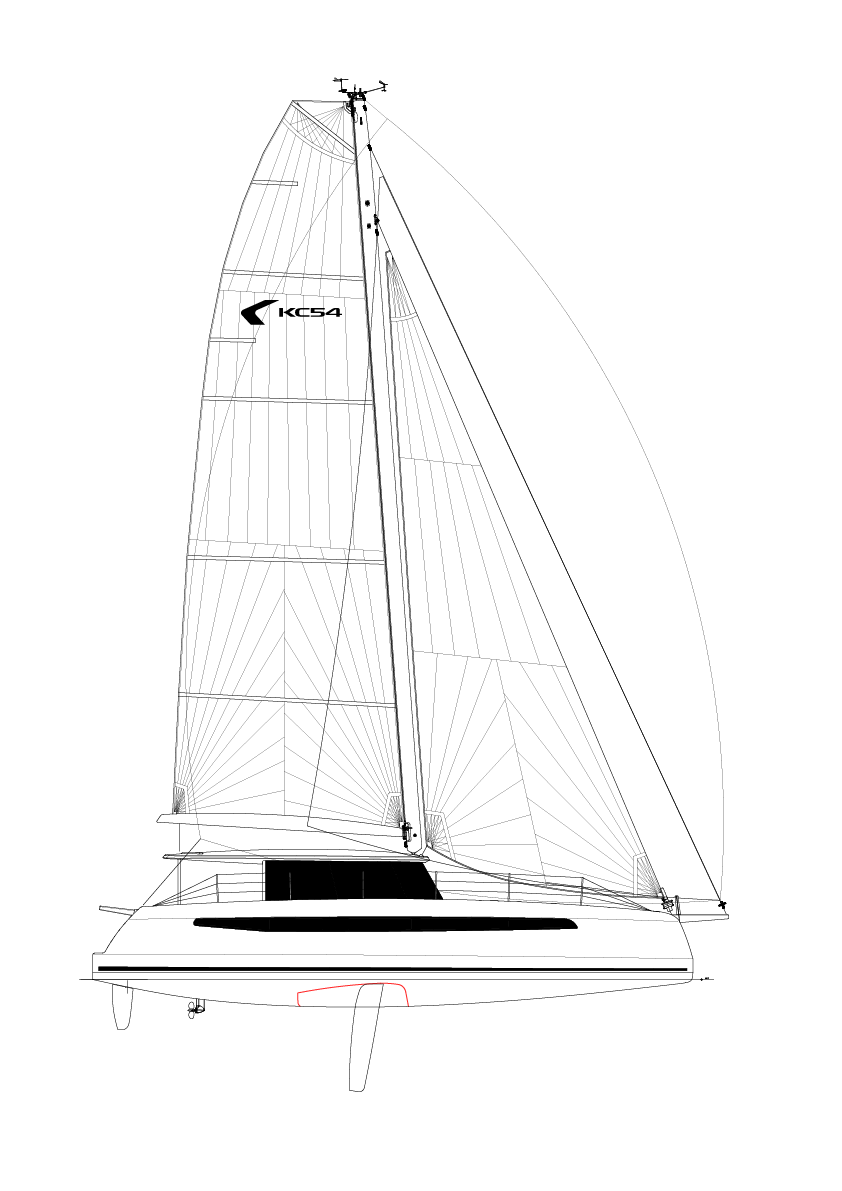Daggerboards vs Centerboards
Collin Marshall - Kinetic Catamarans Commissioning Skipper and Sailing Systems Engineer, breaks down Centerboards vs Daggerboards. Kinetic has an option for either on the KC62 and KC54, owner preference.
What are the fundamental differences between centerboards and daggerboards?
Centerboards or “swing boards” rely on a pivot point at the top of the board allowing it to swing 90 degrees vertically and retract horizontally in a wet cavity built into the bilges in each hull, while daggerboards penetrate only vertically through bearing boxes in each hull. These deployment differences can dictate the shape of the boards thus changing the performance of the catamaran.
Centerboards Pros & Cons
Pros:
There are plenty of reasons for choosing centerboards for you KC54 or KC62. One of the top pros is the safety factor for sure. Here at Kinetic Catamarans, our centerboards are driven by push button line drivers governed by proximity sensors. We have integrated “fuses” or a weak spot in the line holding the board down which would break upon grounding or hitting a submerged object. The boards are buoyant and would float back up into the case with minimal damage to the leading edge. An inspection is recommended if this scenario plays out however with easy access to the line drivers and a quick replacement of the fuse we are off and sailing again.
Cons:
Centerboards although very safe do take a small performance reduction. Having the lateral resistance retract into a box built into the hull not only governs the shape of the board but also leaves an open cavity for water turbulence to occur, which can disturb the water flow down along the hull and over the rudder. Another performance hit occurs when you want only a percentage of your board down, the lateral resistance is reduced dramatically.
See illustration below for reference of the cavity outlined in red.
Daggerboards Pros & Cons
Pros:
As a sailor when I hear the term “daggerboard” I think of performance. Daggerboards can vary in shape whether asymmetrical or even curved therefore increasing lift while sailing. Our daggerboards are also push-button line driven for easy handling, however, they retract into a much smaller bearing box oriented for vertical deployment thus reducing the disturbed water turbulence. If we struck the bottom or a submerged object with a daggerboard we could repair it by pulling the board out of the boat with a halyard.
Cons:
The daggerboard does not have a safety fuse integrated into the line driver since they are vertically lifted. If a daggerboard struck an object it would endure the full impact force and transfer the load to the bearing box which would result in higher levels of damage to the board or even the boat. Daggerboards also require real estate in both port and starboard hulls penetrating into the cabins, therefore, reducing some hallway space or even cabin room.
See illustration below for reference of the reduced hallway space in both hulls:
Which is better for performance vs cruising?
If you are looking for maximum performance out of your KC then I would recommend daggerboards. However, these are 20+ knot catamarans with either setup so it really depends on the owner's goals and also the sailing destination. If I wanted to cruise the Bahamas which is notorious for shallow water then centerboards would be the safer choice, however, if I were to enter my catamaran in an ocean race then I would tend to lean more towards daggerboards.
Which one is better suited for shorthanded sailing?
I would not label either board option better for shorthanded sailing. We specifically design Kinetic Catamarans for shorthanded sailing with both board setups being push-button controlled.
Lastly, which is your preferred option and why?
I've had extensive experience with both foils and I must admit that the daggerboards do give the cat that extra performance gain. I've spent most of my career racing sailboats so I'm a bit biased towards performance. Most of us racers choose to sleep on wet sail bags in tight berths just to go a fraction faster, however for cruising I recommend centerboards mainly for the safety factor. Both options are incredibly high performance and easy handling for shorthanded sailing so it really is about the intent of the owner.


